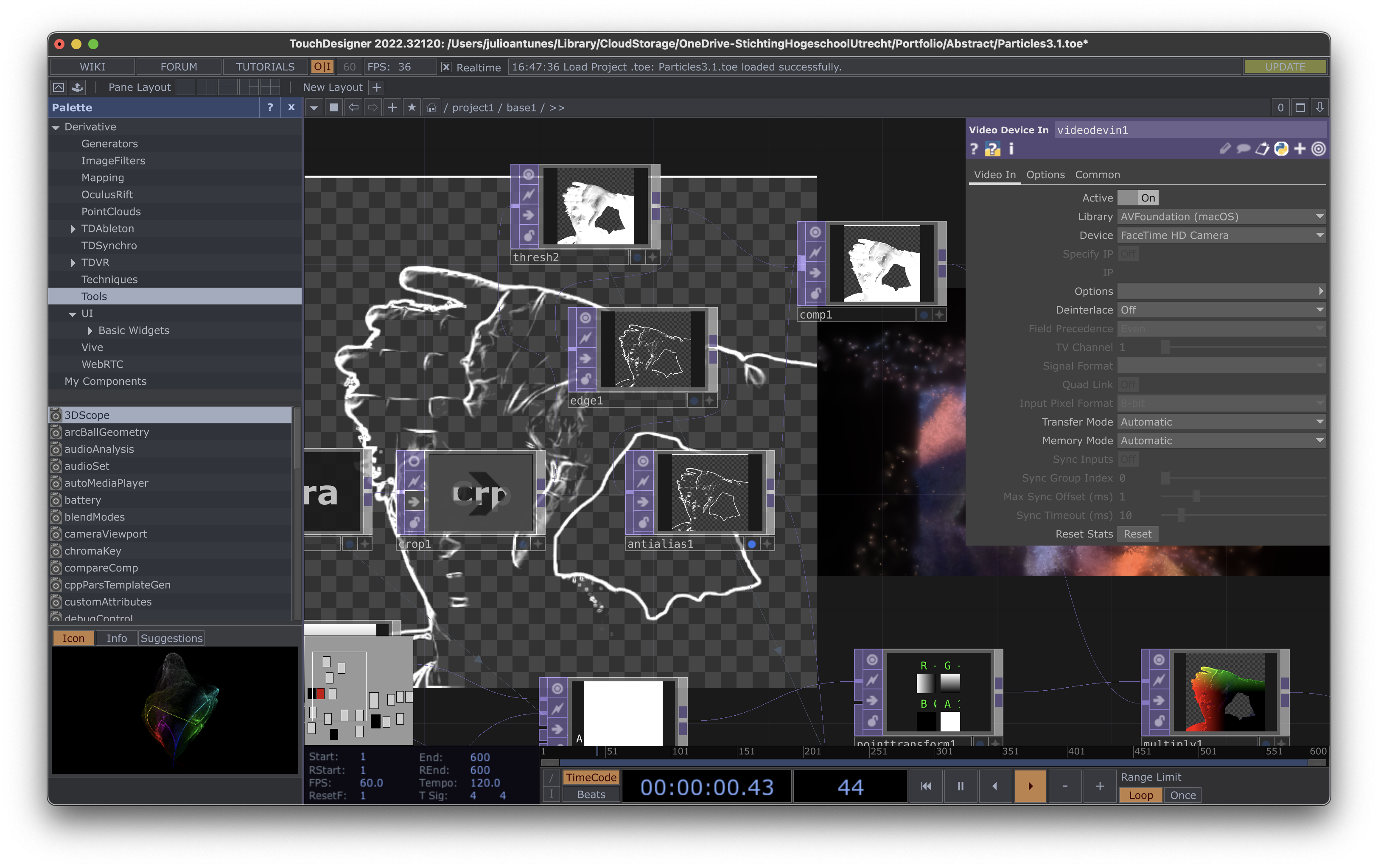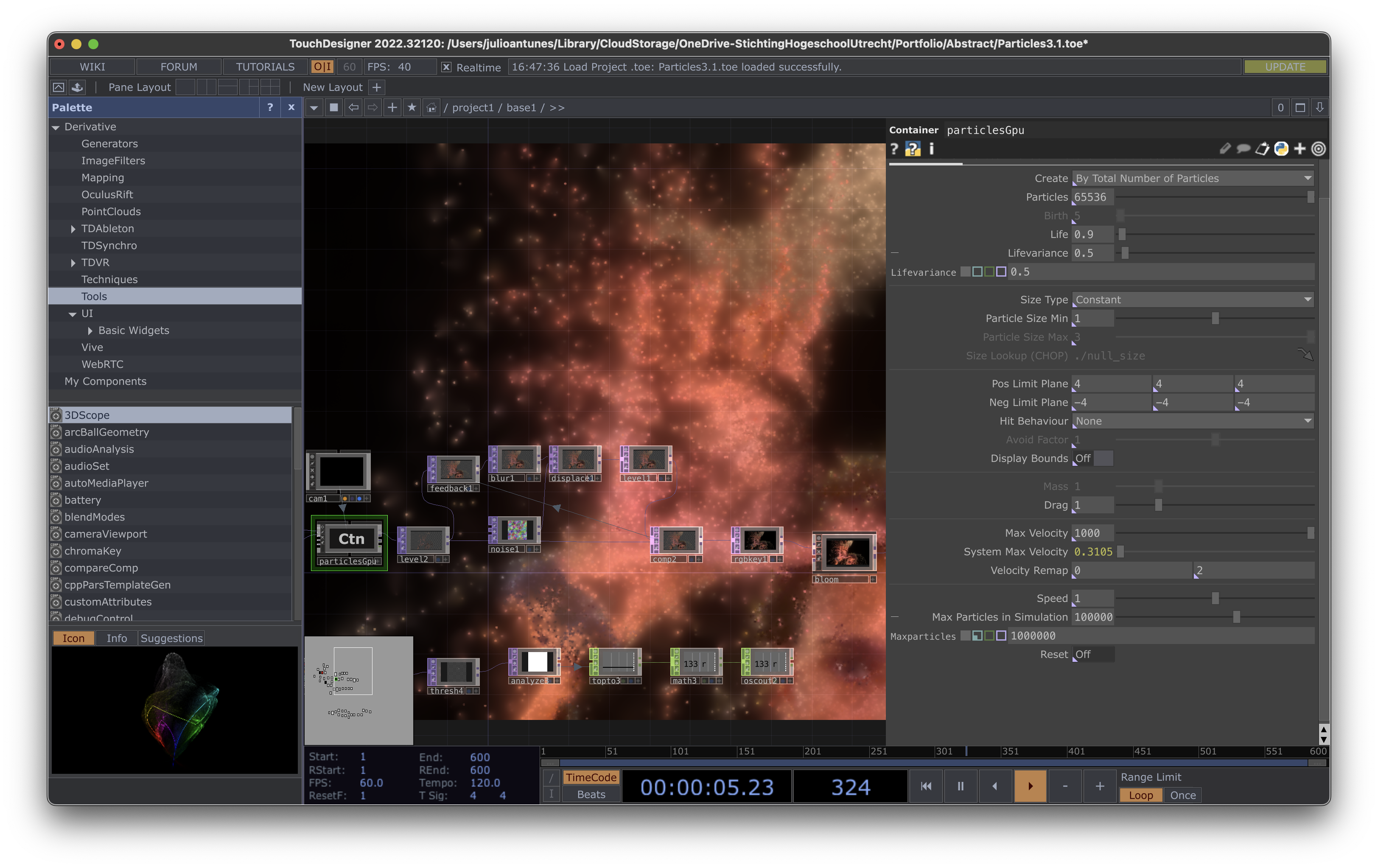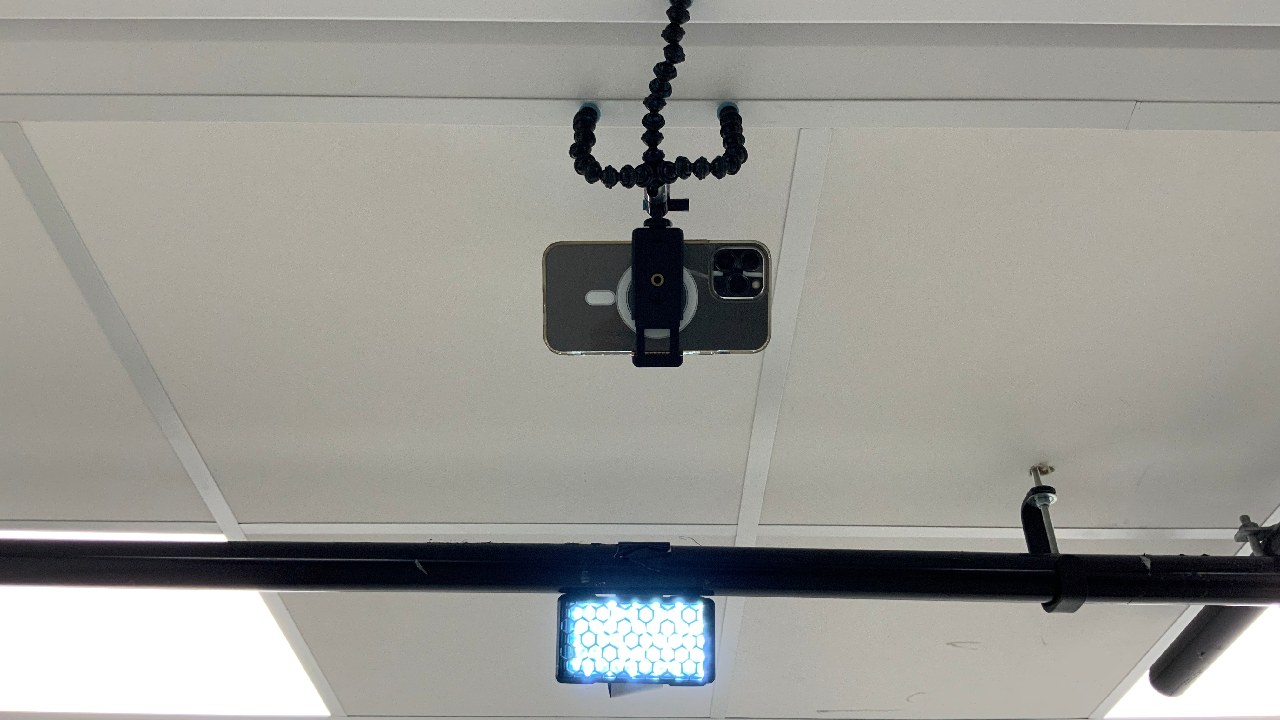


Abstract
Particle Portrait
Synopsis
"Particle Portrait" invites participants into a mesmerizing audio and visual experience that blurs the boundaries between self-expression and collective artistry. As individuals stand before a projection on the wall, they become active participants in a captivating interplay of visuals and sound. A camera captures their image, transforming it into a cascade of particles that dance and morph in response to their every movement.
In this immersive installation, the visual representation of each individual becomes a dynamic tapestry of particles, symbolizing the intricate connection between the self and the collective whole. As participants move, the particles respond with a symphony of audio, creating a unique and personalized soundtrack for each person. The audio, akin to the tinkling of sprinkles, mirrors the motion and energy of the participants, establishing a harmonious relationship between movement and sound.
"Particle Portrait" serves as a celebration of individuality and unity, allowing participants to interact with their own visual representation and, in turn, contribute to a collaborative audio-visual masterpiece. The merging of personal identity with a shared artistic expression transforms this installation into a unique and communal exploration of the interplay between self and collective creativity.
Process

Embarking on the technical exploration of "Particle Portrait," I delved into TouchDesigner, leveraging its capabilities to craft a visually captivating and interactive experience. In Figure 1, you can witness the initial steps, where I began by using a camera and various operators to create the silhouette of a person.
The subsequent transformation of these lines into particles was made possible through the Particles GPU, as showcased in Figure 2. To achieve the desired visual outcome, I experimented with a variety of operators, refining the process until the representation met my artistic vision.


While I initially considered using a Kinect for more efficient motion capture, technical constraints led me to innovate. Despite unsuccessful attempts with Kinect options on my MacBook, I opted for my cellphone camera wirelessly connected to the computer. Figure 3 illustrates how a strategically placed light and cellphone camera enhanced audience visibility for better projection capture during the installation.
The adaptability of the installation shone through during audience testing, where each person's interaction uniquely shaped the experience. Participants intuitively grasped the audio-reactive nature of the installation, modulating their movements to explore the intricate relationship between motion and sound. In Figure 4, the technical connection between TouchDesigner and Ableton comes to light, employing pixel comparison to analyze silhouette changes in real-time, the value goes to 0 when there’s no movement being captured.
The synergy between TouchDesigner and Ableton facilitated the audio-reactive feature, with pixel changes influencing the "Hiss Amount" in Ableton's preset for Audio Effect Racks. As demonstrated in Figure 5, this intricate connection translated the visual dynamics of particle movement into a harmonious audio landscape, creating a seamless fusion of sight and sound in the "Particle Portrait" experience.
Reflection
Embarking on the journey of creating "Particle Portrait" with TouchDesigner proved to be a challenging yet immensely rewarding experience. The vast possibilities within TouchDesigner presented an exciting canvas, but my limited knowledge occasionally led to moments of uncertainty, grappling with how to actualize my creative vision. Despite these challenges, I found that the key was embracing a spirit of experimentation and creative freedom.
As I navigated the complexities of TouchDesigner, the project evolved organically when I allowed myself the liberty to explore without rigid preconceptions. The results were surprising and exceeded my initial expectations. Through this process, I learned to leverage TouchDesigner's capabilities in innovative ways, pushing boundaries and discovering solutions to obstacles that arose along the way.
One significant takeaway was the mastery of communication between TouchDesigner and Ableton, a skill set that extends beyond this project. This newfound knowledge opens doors to future collaborations with various audio software, enriching the potential for creative audio-visual synergies in upcoming projects.
Perhaps the most gratifying aspect was witnessing the audience engagement during testing. Participants not only interacted with the visuals but also quickly immersed themselves in the audio, intuitively understanding and responding to the audio-reactive nature of the installation. Their involvement not only validated the success of the project but also underscored the power of interactive art in captivating and resonating with audiences. This experience has fueled my enthusiasm to continue exploring the intersection of technology, creativity, and audience participation in future projects.